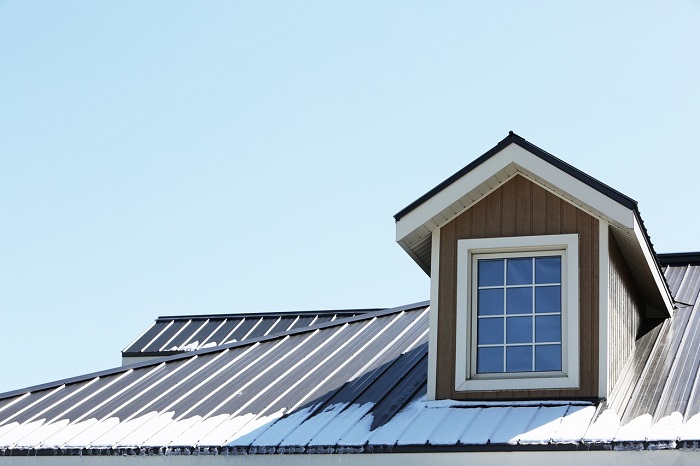Best Roofing for Summer: Get Busy Before the Lazy Days of Summer
Summer in Southern California brings weather that is just as harsh on your roof as winter. From intense sun baking the surface to sudden rain storms soaking your roof and seeping in; it runs the gamut. In the spring, before things start to heat up, it’s a good idea to check for any potential problems so you can prevent severe damage.

Roofing experts agree that you can prolong your roof’s life with regular maintenance. It’s well worth your while to check the roof between the seasons, as they each have their elements that can wreak havoc. Read on to learn about some things that you should be doing to get your roof ready for summer.
Before you start, take caution when using a ladder, and make sure that it’s on level ground before attempting to climb it, even if only for a few feet. Being on the roof is a dangerous undertaking. Don’t be lulled into a false sense of security — even a fall from a one-story house can be serious. Make sure you take the proper precautions, and never get on the roof while you are home alone.
Start on the Inside
You may not think about your attic when it comes to roof maintenance, but it can bear signs of roof problems. If you have access, it’s a good idea to check with a flashlight to see if there are any wet or water stained areas. Be sure to check the rafters as well as the plywood segments, as water can run down them and leave evidence. It may behoove you to do this inspection on a rainy day because if there are leaks, you may catch them in action. Note where in the roof the water is coming in, if possible.
Having a well-ventilated attic will also help prolong the life of your roof. As the sun relentlessly beats on it, heat can build up in the attic, and if it’s not able to escape, it will condense and produce moisture.
Finally, turn off the flashlight, and check for light that may be coming in through small cracks or gaps. Where there is light, there will be water, and that moisture will shorten the lifespan of your roof. Cracks and gaps should be taken care of right away.
Move to the Outside
Once you’ve got the inside checked, it’s time to move outside with your ladder and some binoculars. You’re going to be looking closely at your roof without risking a fall from the roof. But first, start with an inspection of the gutters.
Gutters and downspouts
Check the gutters and downspouts for debris like pine needles and leaves. Scooping out anything you find is the easiest and least messy way, believe it or not. If you’ve ever tried to spray a hose through a gutter full of nature, you’ll know just how dirty it can get. There are specialized gutter-cleaning tools that you can buy, or you can improvise using things you might already have, like cut-off soda bottles or even kid-sized hand shovels.
Once the bulk of the debris had been cleaned out, then the hose can be put to use. Spray the gutter clean and make sure it flows smoothly down the spout. If you need to clear the spout, try dislodging the blockage with a stick or something of the like. You may have to take lower portions of the downspout off to remove the obstruction.
Don’t forget to check out the integrity of the setup, including sagging or leaks. These can allow water to run behind the siding and cause rot. If the gutter has come loose from the trim, gutter screws can be used to reattach it. Check your local hardware store, and they can show you the correct ones.
Shingles and Flashing
While you’re up on the ladder checking the gutters, examine the shingles. If the granules are wearing off the surface, it’s a sign that the roof should be replaced. As a rule of thumb, you’ll get twenty years or so from a roof, before it needs replacement. If you’re not sure of the age of your roof, a roofing professional can give you an assessment, often for free. Check to see that all the shingles are draining into the gutters — you want the rain in them, not behind them.
Stand away from the house and check the shingles with binoculars. Look for any that are missing, or have slipped out of place. Make sure they are all lying flat because that’s another way for water to get underneath and damage the roof. Check the flashing for cracks or gaps, especially the flashing around skylights; most leaks start here.
If the roof dips or sags in spots, it could indicate that there has been moisture trapped in the attic. Sagging should be checked out right away by a roofing expert who can determine what is causing the sags. Finally, survey the area around the structure, and if any limbs or branches have sustained damage and that could fall on the roof in a windstorm.
Fire Season
Fires are becoming an uncomfortably familiar part of life in California. The wind can spread sparks onto houses, and while having a well-maintained roof with no flammable debris can help stop the spread of fire, roofing material is important to consider. There are many options, from tabbed shingles to metal roofing to help mitigate flammability.
The Roof is Top Priority
Your roof is the first line of defense for your home, and regular roof maintenance will help you get a good long life out of the whole house. While most of the maintenance can be a DIY project, there are some things best left to professional inspection and judgment.